More than 3000 years ago, radishes were cultivated in plantations. Around 1000 BC, radishes were grown in the lands of Central Asia, where they originate from. At the outset, radishes were a popular vegetable in Greece, Egypt, the Roman Empire, the lands of present-day China, all the way to Japan. Red radish tubers remain one of the most consumed, useful and preferred vegetables and today, most radishes are eaten with spring salads.
By their nature, radishes are an annual root-crop vegetable. They come from the Brassicaceae family. The latin name of the radish is Raphanus sativus var Radicula. In the record books, two groups of radish varieties are formed - European and Chinese.
The popularity of radishes on the table as a favorite vegetable is mainly due to the specific and special taste have, their great wealth of nutrients that preserve and the way they enhance the health of the person. After they left the lands of Central Asia, radishes are grown today in absolutely all latitudes. The reason for this is that radishes are durable and less pretentious vegetables. Radishes are frost-resistant and light- loving plants, their vegetation period is relatively short.
Radishes can be grown both outdoors and in greenhouses. Popular varieties of radishes are "two pots", " superb, " "Popular, " "Pearl, " "Red with white tails" and others. Radishes are easy to grow and do not require constant care and attention. The roots are ready to harvest in about 25-30 days after germination of the plant.
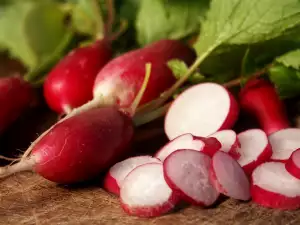
We consume the fruits of radishes. These roots have small fruits, their shape can be oval, conical or cylindrical. Radishes are most often pink-red and can be stained or just pink, red, purple or a combination of these colors. The fruit of radishes is white and dense inside. Radishes are juicy, tender and fresh vegetables, especially if eaten fresh. They are edible long after harvest, but can form so-called. "whithering". Radishes can often be attacked and eaten by worms. A symptom of this are the filamentary patches formed on their outer shell.
Composition of radishes
The chemical composition of radishes determine that they are extremely rich in enzymes, minerals and vitamins. This vegetable is high in vitamin C - more than 30%. It is rich in glycosides, essential oils, sodium, potassium, phosphorus, nicotine and salicylic acid. Radishes contain a colorant called anthocyanin, which gives them a nice red color. They are rich in pectin, fiber, iron, vitamins A, B1, B2, B3 and PP.
100 g of radishes contains 16 calories, 0.1 g fat, 3.4 g carbohydrates, 0.6 g protein and 15 mg of vitamin C.
Radishes stimulate digestion and they contain essential oil that enhances the secretion of digestive glands, with the result that they do not create a feeling of heaviness.
Selection and storage of radishes
When buying radishes, pay close attention to their shell. Normally, it should be fresh and without black spots that are a sure sign of the presence of decay within the interior of the vegetables. Experienced chefs advise that radishes can be stored in the refrigerator, dipped in a little water, or placed directly into plastic bags.

Culinary use of radishes
The purpose of this vegetable is different in different nations. In China, for example, one of the varieties of radish is used for extraction of oil and in India, they are grown because of their large edible fruit.
Small radishes are one of the most popular spring vegetables. They are mainly used in popular salads and without their presence, they just would not be the same. Radishes can be put on sandwiches, they are made very useful and beneficial juice.
Radishes are not a popular vegetable for canning. Radishes are not susceptible to any heat treatment as their flesh mushes up and loses its taste qualities.
Benefits of radishes
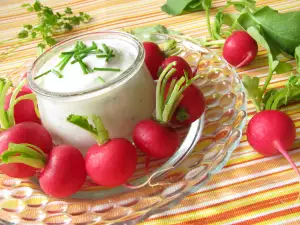
Radishes are very helpful for a lot of health problems. In many cases, they have a beneficial effect if you are overweight, or have high blood pressure and heart problems. If you suffer from any of these diseases, it is much better to increase your intake of radish to the maximum. If not by themselves, you can eat radishes combined with lettuce, green onions and garlic and put as a supplement and boiled eggs.
In some cases, radishes are very effective treatment in the fight against colds and influenza as an important anti-inflammatory role. Radishes have analgesic effects in cases of neuralgia and radiculitis. An easy recipe for a light Radish elixir for colds, is making radish juice in combination with onion and honey.
Radishes are particularly valuable for people suffering from diabetes. Radish juice is a rich source of vitamin C, which makes it very useful in the fight against spring fatigue. Radishes stimulate the liver and kidneys.
Scientists at Ohio University have found that the anthocyanin contained in radish has the ability to slow the growth of cancer cells in colon cancer.
Dangers of radishes
Radishes are generally harmless food, but there is a potential risk for those people who have an intolerance to any component of the otherwise delicious spring vegetables.
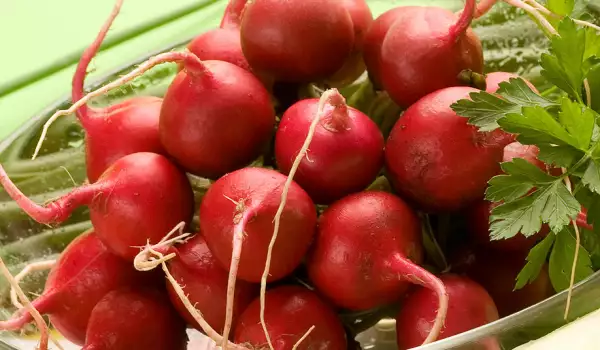




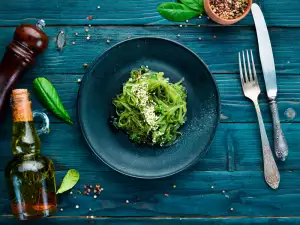
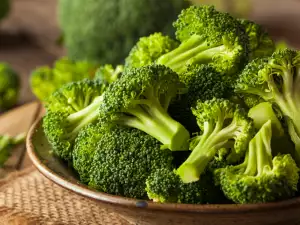






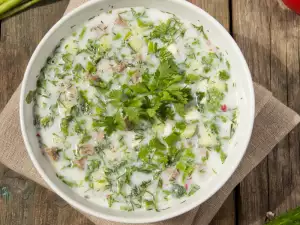

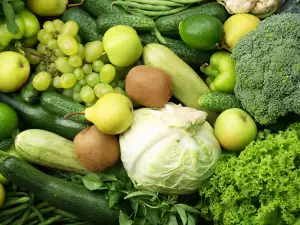




Comments